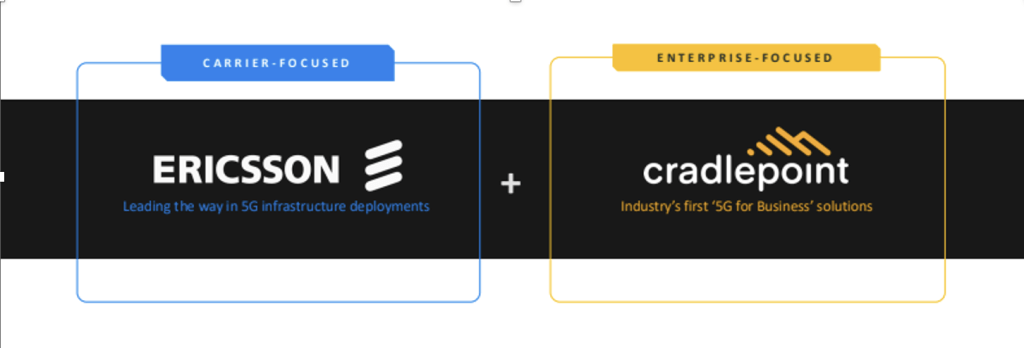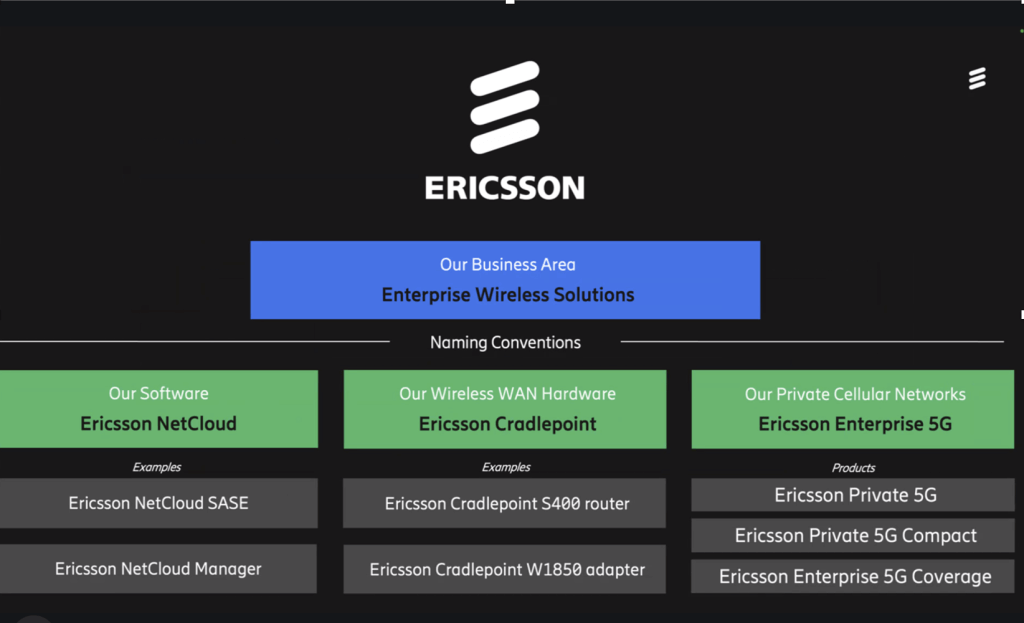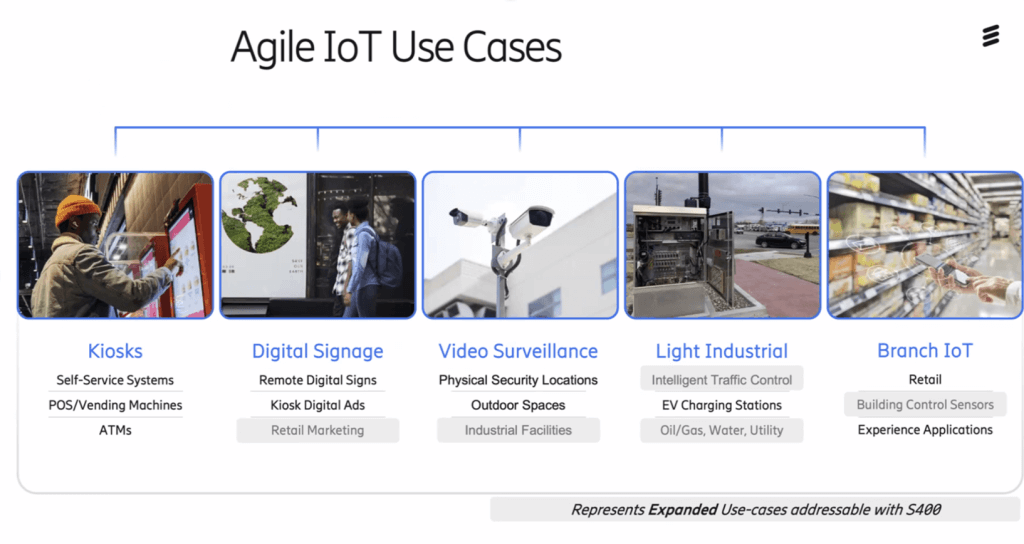Last week, Bob and I covered Ericsson’s network APIs venture, which unlocks some pretty exciting potential for telcos. We also had a chance to sit down with the Ericsson team following the analyst forum event in Boston for a briefing on the move by Ericsson to rebrand Cradlepoint and integrate it into Ericsson as Ericsson Enterprise Wireless Solutions.
Ericsson’s Enterprise Wireless Solutions
Ericsson acquired Cradlepoint, a North American pioneer in networking solutions for enterprise companies, in the fall of 2020 for $1.1 billion. Cradlepoint’s gateway routers, located at the network edge and connecting wireless or fixed networks to a wireless WAN, were and are an attractive addition to the Ericsson portfolio — and one that enhanced the company’s capabilities as a whole. The wireless WAN edge market is fast growing, and the demand for pervasive, reliable, and secure network connectivity is important in today’s highly distributed IT and application environment.
This latest move by Ericsson, shifting the Cradlepoint brand into its suite of enterprise wireless solutions, is a smart move because it separates the company’s focus on carriers from its focus on delivering enterprise-wide wireless solutions.

While the Cradlepoint brand as a standalone solution has been retired, the well-known and well-respected brand will sit inside the broader Ericsson platform as a hardware brand for routers and adapters. In much the same way, Cradlepoint’s SASE solution will slide into the Ericsson NetCloud SASE offering. Overall, these are strategic moves that address Ericsson’s longer-term goal for all tech to sit inside the entire Ericsson platform, which looks like this —

The Journey to Cellular-First Enterprise Networks
Ericsson’s goal is to make cellular technology an integral part of the enterprise. The company envisions a future where cellular connectivity is not relegated to being a tertiary connection but instead is the primary method for enterprises to connect their devices and systems securely, reliably, and affordably. A crucial aspect of this vision is to offer solutions that cater to various business needs, whether for office environments, remote vending machines, or vehicle-based applications.
Ericsson is committed to ensuring that enterprises have access to the right form factor, performance, and pricing models. By delivering solutions that seamlessly integrate with existing assets, such as Wi-Fi or fixed infrastructure, Ericsson can more effectively help its enterprise customers transition toward a more advanced wireless future. This includes helping businesses make the most of their current investments while incorporating the benefits of wireless connectivity for increased security, reliability, and agility.
Ericsson Expands the Enterprise Wireless Portfolio
A key component of Ericsson’s enterprise strategy is to provide secure, reliable wireless solutions that can operate in any location, whether it’s in a factory, on a vehicle, or within an office.
The Ericsson Enterprise 5G portfolio includes the company’s private cellular networks, mobile network deployments, and neutral host offering. That 5G neutral host solution is attractive; certified by major US carriers (i.e. AT&T, Verizon, and T-Mobile), and aims to solve indoor coverage challenges. What’s exciting about this is bringing three vendors together to help deliver this solution, and the neutral host coverage, which is a differentiator from Private 5G, is significant. Ericsson’s Enterprise 5G solution is targeted at venues like airports and campuses, offering lower costs and easier deployment compared to traditional distributed antenna systems (DAS).
Ericsson’s Enterprise Wireless Hardware Solutions
Ericsson’s recent announcements included a number of new hardware solutions, including:
Ericsson Cradlepoint R980. The Ericsson Cradlepoint R980 is a ruggedized 5G router for fleet vehicles and high-value IoT environments, designed for a 5G future. This zero-trust IoT gateway can be used to broaden access and utilization of 5G to support AI-based surveillance cameras, license-plate readers and other critical comms used by first responders and other high-bandwidth devices. While the greatest volume of usage, at least today, is expected to be in-vehicle, what we find attractive is that as IoT advances, customers will have a platform that will work for other use cases. While this is an entry-level, cost-effective product where most of the volume is expected to be in-vehicle, it features the latest in 5G architecture, 3GPP release 16, so there’s definitely room to grow. It’s impressively eSIM ready, stand-alone (SA) compatible, and network-slicing ready. Clearly this is Ericsson’s move to enable advanced solutions in a cost-effective manner while also providing accessibility, scalability, and security. It’s also totally compatible with NetCloud SASE.
Ericsson Cradlepoint S400. The Ericsson Cradlepoint S400 is a semi-ruggedized entry-level cellular IoT gateway that is both compact and cost-effective. To us, it’s an entry-level platform that doesn’t feel entry-level, as the certifications bring it up to the level of higher-end IoT devices. Ericsson is being smart here: by bringing a low-cost solution that includes zero trust for IoT deployments, including NetCloud SASE Secure Connect, they are paving the way for mass deployment with a compelling, competitive offering for agile IoT use cases.
Although entry-level, the Ericsson Cradlepoint S400 includes a Cat 6 LTE modem and provides flexible interface options such as DB-9 serial and 2×10 GPiO or dual Ethernet modules. Extensibility has been built in, fitting into both IT and OT environments, a strategic effort to help ensure customers are connecting the right way from the outset.

Ericsson Enterprise 5G Coverage. The Ericsson Enterprise 5G coverage offering makes it clear that 5G is at the heart of everything the company does. The 5G neutral host solution certified by major US carriers (i.e. AT&T, Verizon, and T-Mobile) aims to solve indoor coverage challenges. What’s exciting about this is that Ericsson’s solution is being sold for the first time to enterprises, and it’s certified by all three carriers. Ericsson’s Enterprise 5G Coverage solution is targeted at venues like large office buildings, airports, hospitals, and campuses, offering lower costs and easier deployment compared to traditional distributed antenna systems (DAS).
Supporting Critical Applications and Industries
Ericsson Enterprise Wireless offerings extend far beyond traditional office environments. The solutions provided are tailored to mission-critical applications, such as those used in public safety, logistics, and manufacturing. For example, advanced cellular solutions are now being deployed in factories to connect autonomous guided vehicles (AGVs) and other key operational tools. By providing reliable, low-latency wireless connections, companies can improve productivity and minimize the downtime associated with poor network performance.
Additionally, enterprise networks now require the ability to manage diverse devices, from IoT sensors to mobile devices, across both public and private networks. Ericsson’s enterprise wireless solutions provide a seamless experience for managing security and connectivity policies across all devices, ensuring secure, consistent performance regardless of where or how a device is connected.
Ericsson is Focused on the Future
As industries continue modernizing and adopting more advanced networking solutions, it is obvious that Ericsson aims to lead the way with its cellular-first approach. The company’s investment in artificial intelligence (AI) and cloud management platforms, such as its Ericsson NetCloud offering, underscores its commitment to helping enterprises do more with less. This platform provides organizations with the tools to manage and monitor their networks easily, offering scalability, flexibility, and security across distributed environments.
Ericsson Enterprise Wireless solutions are focused on transforming how enterprises think about and deploy wireless networking. Through the combined strengths of Ericsson and Cradlepoint, as well as the 2022 Vonage acquisition and the company’s recently announced network API venture, Ericsson’s enterprise offerings are positioned to provide secure, scalable, and flexible networking solutions that will help enterprises grow, innovate, and remain competitive in an increasingly connected world.
Image credit: Edward Jenner, Pexels
See related coverage here:
Ericsson’s Network APIs Venture Unlocks Vast Potential for Telcos
Cradlepoint Launches NetCloud SASE to Serve and Secure Agile Enterprises
Gen AI and IT Infrastructure: Exploring the Impact on the Network



